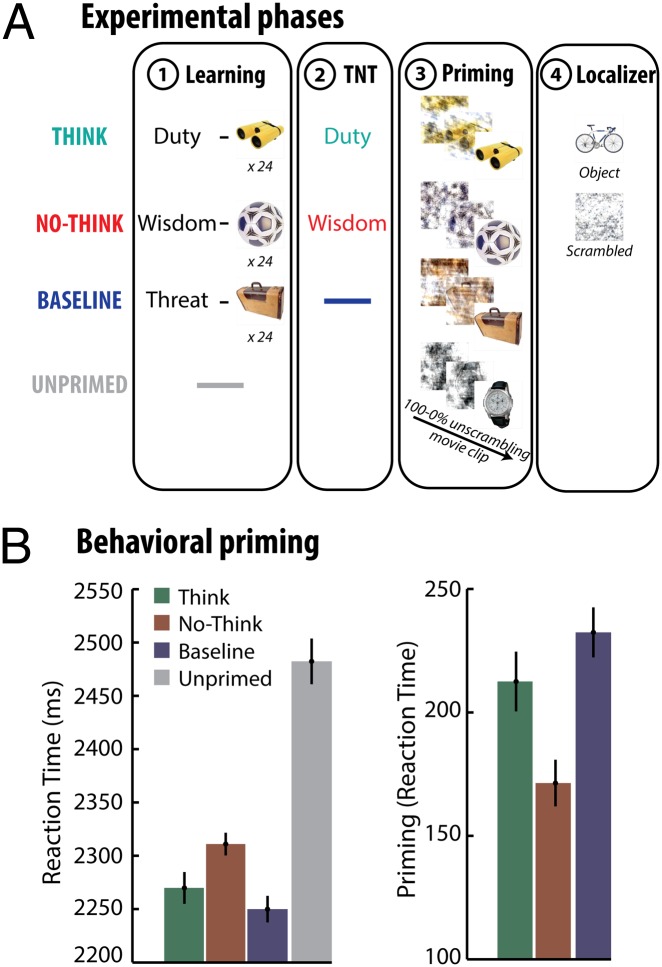Fig. 1.
Behavioral methods and results. (A) The procedure. After learning pairs consisting of a word and object picture, participants were scanned during the think/no-think (TNT) task. For think items (in green), participants recalled the associated picture. For no-think items (in red), they tried to prevent the picture from entering awareness. Next, participants were scanned while think, no-think, and baseline (old) objects plus new unprimed objects appeared in a perceptual identification task for degraded objects. In a localizer session, fMRI data from a comparison of new intact and scrambled objects were used to isolate object perception regions. (B) Reaction times to identify the scrambled object during the perceptual task (Left) and priming effects for studied objects (unprimed − old reaction time; Right). Error bars represent within-participant SEs. No-think objects exhibited less repetition priming than did think or baseline objects indicating that suppression disrupted perceptual memory.

